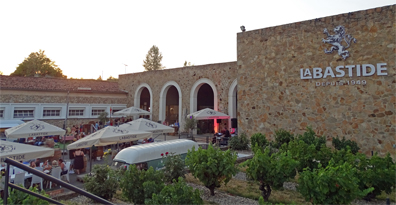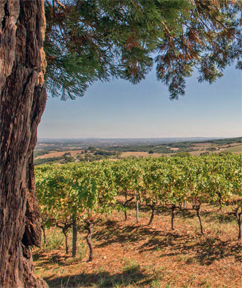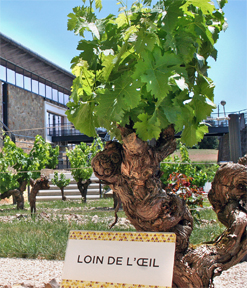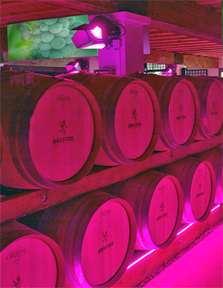Maison Labastide
(An Online Virtual Visit)
by
Terry Sullivan
Images provided by
Maison Labastide
This article describing Maison Labastide is based on the online interview, online data and photos supplied by Maison Labastide. This article was written during the time of the world-wide 2020-2021 pandemic. Marie Gay, Export Assistant for Maison Labastide and Arnaud Elgoyhen, Marketing Director answered our questions.
 Summary: Maison Labastide is a cooperative producing over one and a half million gallons of wine. This large cooperative works closely with its one hundred growers and helps them chart new environmental practices for the future. The cooperative also knows their customers and crafts wines wine enthusiasts want to enjoy.
Summary: Maison Labastide is a cooperative producing over one and a half million gallons of wine. This large cooperative works closely with its one hundred growers and helps them chart new environmental practices for the future. The cooperative also knows their customers and crafts wines wine enthusiasts want to enjoy.
History
The cooperative was founded in 1949 as Cave Coopérative des Coteaux de Gaillac et du Pays Cordais. Two years later the cooperative produced their first wine. At that time the cooperative consisted of 80 members, and produced 13,000 hectoliters (343,424 gallons) of wine. Over the decades the cooperative grew absorbing other cooperative cellars. By 1988 the members had increased to 641 and the cooperative produced 167,000 hectoliters (4,411,673 gallons) of wine. By 2016, the cooperative had 100 members and produced 60,000 hectoliters (1,585,032 gallons) of wine.
One of the reasons the original members formed a cooperative was to reduce the cost of production and commercialization. Arnaud Elgoyhen mentioned that, “The group is always stronger than the stronger of the group.” The first president of the cooperative was Mister Noël Pelligry. He also served as mayor of Labastide from 1949 to 1960.
The cooperative was referred to as Labastide since its founding. A longer name, Cave de Labastide de Lévis, was shortened to Cave de Labastide. Recently, in 2017 the name was changed to Maison Labastide. Arnaud Elgoyhen explained why the name was changed, “in order to root our know-how, we are a vineyard house that has been supported many years by the knowledge and the heritage of its wine growers.”
Vineyards
 The members of the cooperative farm 850 hectares (2100 acres) of grapes. White grape varieties include Mauzac, Sauvignon Blanc and Le Loin de l’Oeil. Red varietal grapes include Duras, Braucol, Syrah and Gamay. The cooperative works with the growers. For example, the laboratory team analyzes the grapes for maturity, including acidity and ripeness.
The members of the cooperative farm 850 hectares (2100 acres) of grapes. White grape varieties include Mauzac, Sauvignon Blanc and Le Loin de l’Oeil. Red varietal grapes include Duras, Braucol, Syrah and Gamay. The cooperative works with the growers. For example, the laboratory team analyzes the grapes for maturity, including acidity and ripeness.
Wine Trail Traveler asked what are the advantages for growers to belong to the cooperative rather than being on their own? Marie Gay responded:
We work closely with the growers and aim to provide them with services, we transform and commercialize their harvest into high quality wines. We give them an access to the market developing their brand image and sell wine as product of the terroir. We aim to sell the totality of the production. Socially we aim to maintain the most numerous wine growers in activity on viable land. We bring the technology needed to invest in material and human resources to guarantee the consumer with the production of high quality, healthy and authentic product.
Our growers are the vitality of the vineyard and the strength of the cellar.
Marie continued to discuss the Gaillac terroir.
 There is a double influence in climate. The softness of the oceanic influence, limits the risk of freeze and allows a better supply in water for the vine. The warmness of the Mediterranean influence, allows the grapes to reach a beautiful maturity.
There is a double influence in climate. The softness of the oceanic influence, limits the risk of freeze and allows a better supply in water for the vine. The warmness of the Mediterranean influence, allows the grapes to reach a beautiful maturity.
There are four different types of soils: Terrasses rive gauche: gravelly ground and well exposed. Coteaux Rive Droite: oriented to South, deep limestone soil. Plateau Cordais: white limestone and stony soil. Terroir de Cunac: production of Gamay.
The cooperative with an influence from the past keeps its eye on the future. They are aware of both society and environment. In the upcoming years there will be an emphasis on vineyards certified HEV (High Environmental Value). In the future, the cooperative will explore new markets to export their production.
 We asked, what makes the cooperative unique? Arnaud Elgoyhen, Marketing Director, replied.
We asked, what makes the cooperative unique? Arnaud Elgoyhen, Marketing Director, replied.
Maison Labastide is a unique cooperative because it is the oldest wine making cellar located in the Tarn region. Through the years, it imposed itself as a major actor of the Gaillac vineyard. Its wine growers are producing high quality wines, with a powerful identity using local grapes but also producing wines with bubbles; an example of it would be the Gaillac Perlé; designed and created by Maison Labastide. Our Maison, brings together the know-how of our wine growers and the technicality of our oenologists, with modern equipment to produce wines in tune with the times.
Wine Tourism
Expect wine tourism to be much more than a tasting of wines. Wine enthusiasts will be immersed in the vineyard to the bottle culture. Marie explained.
Use your five senses entering at the heart of the Gaillac terroir through our legendary path. Discover the history of our vineyards and our house as well as our know how in a unique way. From the vines to the glass, going through the different steps of the winemaking process, let yourself be carried away by a visit full of emotion, a sensitive, visual and unique path. The Gaillac wines won’t have any secrets for you anymore!
Wine enthusiasts can discover the wines of South West in France. Maison Labastide offers a range of wines that will introduce you to the Gaillac terroir.
Article written February 2021.
Visit these tour operators that partner with Wine Trail Traveler.
 |
||||
France
|
France
|
France | SmoothRed London, England, United Kingdom |


